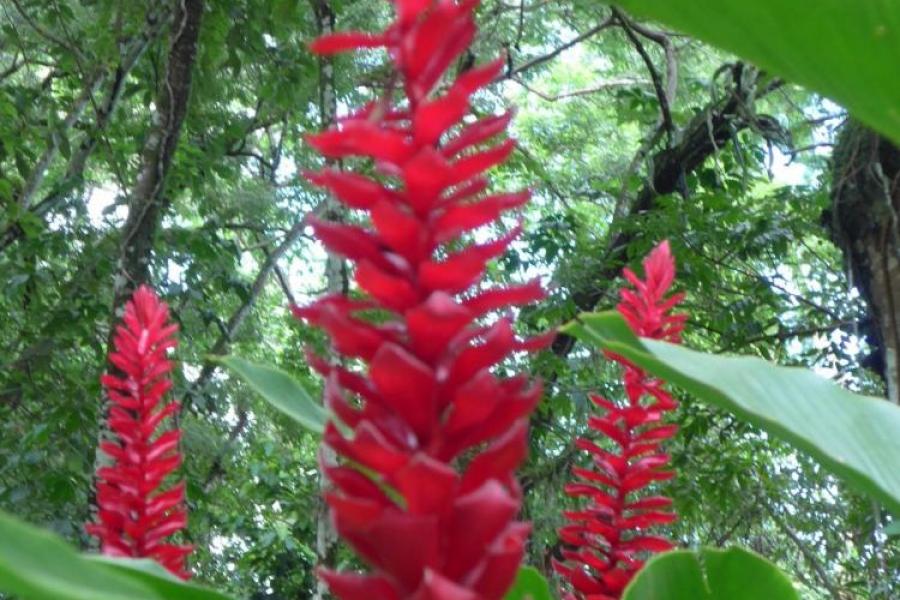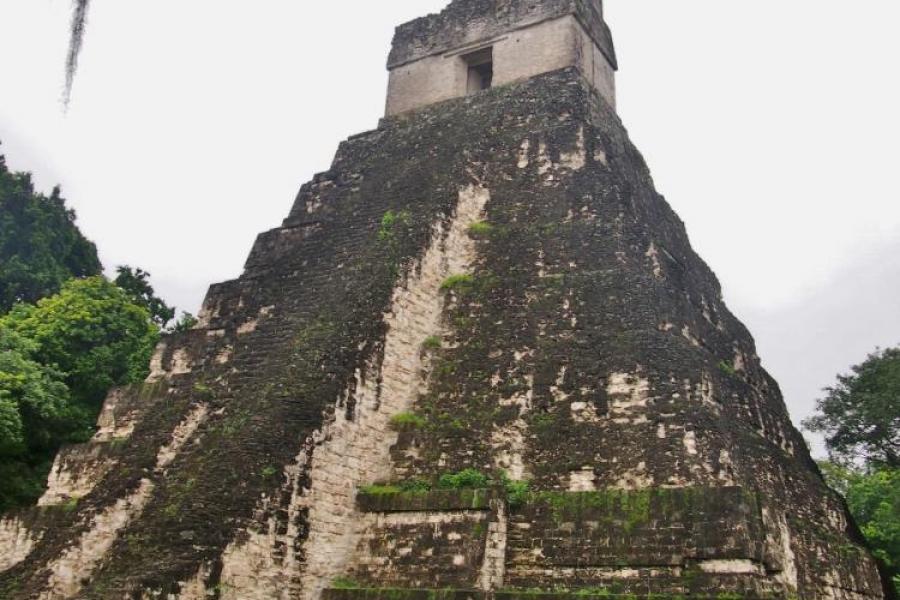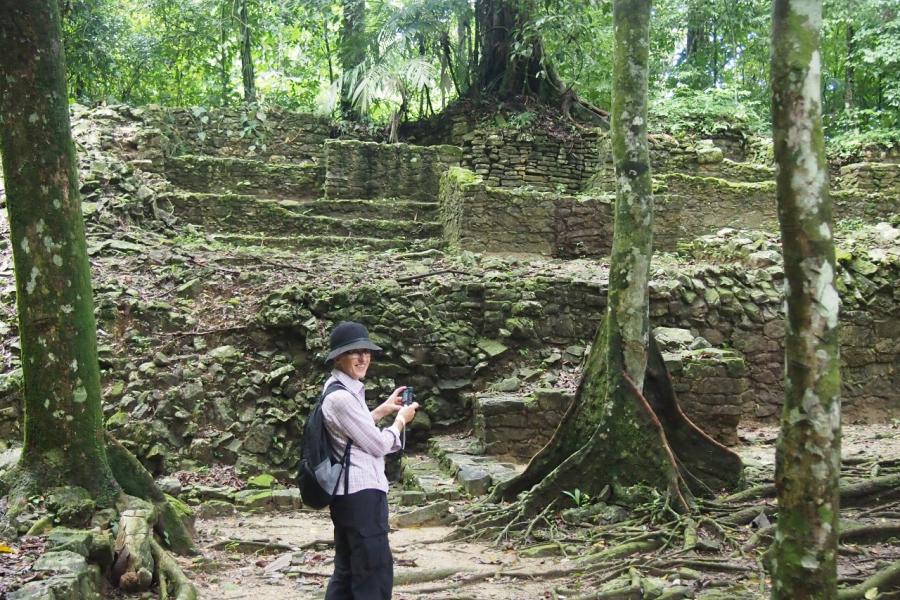Mayan our own business (Originally posted 30 Nov 20150
Country
Belize is a tiny country nestled on the Caribbean coast between Mexico and Guatemala where they speak a few variations of English. It is something of an anomaly in the sea of Spanish that is Central America. We rode most of the way down the country on half a tank of fuel while we tried to pick up the cadence of the local dialect. We found the accent so remote that we sometimes reflexively answered questions in Spanish as though it was a better chance for a common tongue. Any comfort we may have felt from a common language, however, was lost when we realised that Belize has the unfortunate characteristics of being both poor and expensive.
Faced with an assault on our budget we stayed in Belize just long enough to work out the difference between “beans and rice” and “rice and beans” (don't ask), then crossed into Guatemala heading for the northern city of Flores and access to the famous Mayan ruins at Tikal and the end of a long circuit of Mesoamerican sites. Tikal lies due south of the Mayan city of Calakmul in southern Mexico and east of the major site at Palenque which had been on our agenda over the previous fortnight. We had also visited a host of minor sites at places like Xpujil, Becán and Balamkú and a number of excellent Museums on Mayan culture. On top of this, we had done the Aztec story around Mexico City and a number of other sites from lesser dynasties at places from Zacatecas south.
By the time we had spent a day in heavy rain trudging around Tikal, trying hard not to become a casualty of the treacherously slippery stonework, we were Mesoamericaned out. We decided that any further examination of piles of old stones could wait a few months for South America and a fresh start. This is not to say that these sites and the cultural history that unfolds in them isn't interesting and worthy. It is simply that our focus is always on the people and the life of a country and we see old stones everywhere as part of that story. Sometimes seeing a mountain of stone doesn't help us to understand anything about the land in which they lay.
But, they are impressive. At Tikal, one pyramid rises 64 metres above the surrounding plaza; 64 metres! It is hard to imagine it without standing at its base and wondering at the skill that produced it without the aid of metal tools or wheeled vehicles. Nor does it take much imagination to see the beautiful plazas full of life, or the way the simple domestic requirements of the city like sewerage and water were met.
The museums were full of speculation about life in these pre-Columbian civilizations but, overall, we were surprised at how little is known. Three of the more interesting elements, however, were the Mayan written texts based on a complex library of glyphs, the Mayan calendar with its predictions of the future and, my favourite, the number system. The number system had a base of 20 with the numbers 1 to 19 represented by dots and dashes. After 20 a character representing zero provided the place value for the number. While we take the idea that there is a number “zero” for granted, it is a relatively new concept. Mayan use, from about 350 CE, is probably the most impressive example of the concept being developed completely from scratch.
The question which teased me most about the sites, and which was seldom clearly explained in the museums, was why all these impressive structures were built at all. For the most part they were not defensive although there were often some defensive features around a city. Most often these were based on the geography or, in some cases, a moat dug around the central structures. Considering these civilizations were in a constant state of war, this seems unfortunate.
Like grand structures to this day, they were built for power and religious purposes and for the aggrandizement of the priest/rulers of these mini-empires. In these societies the leaders were both priest and ruler and legitimacy rested on an ability to intercede with the gods through a special and close relationship. This relationship, exercised though proper ceremony, ensured the well being of the people. The more impressive the building and the ceremonies it housed, the more legitimate seemed the man who claimed a special relationship with the gods.
In this sense the Mesoamericans and the Europeans of the Middle Ages differed a little in their arrangements. The Europeans maintained a symbiotic relationship between the princes and the bishops. The bishops provided the divine right to rule while the princes provided the money and muscle. Both established a ruling elite and built impressive edifices at the expense of an underclass to reinforce their authority. It is all very interesting, but as a practical man who thinks that anyone who claims a special relationship with a god is a charlatan, I would rather the effort went to some useful defensive works and better plumbing and let the gods do their own construction work. At least that way you might keep the people alive and healthy. But, then again, power is seldom practical.




























